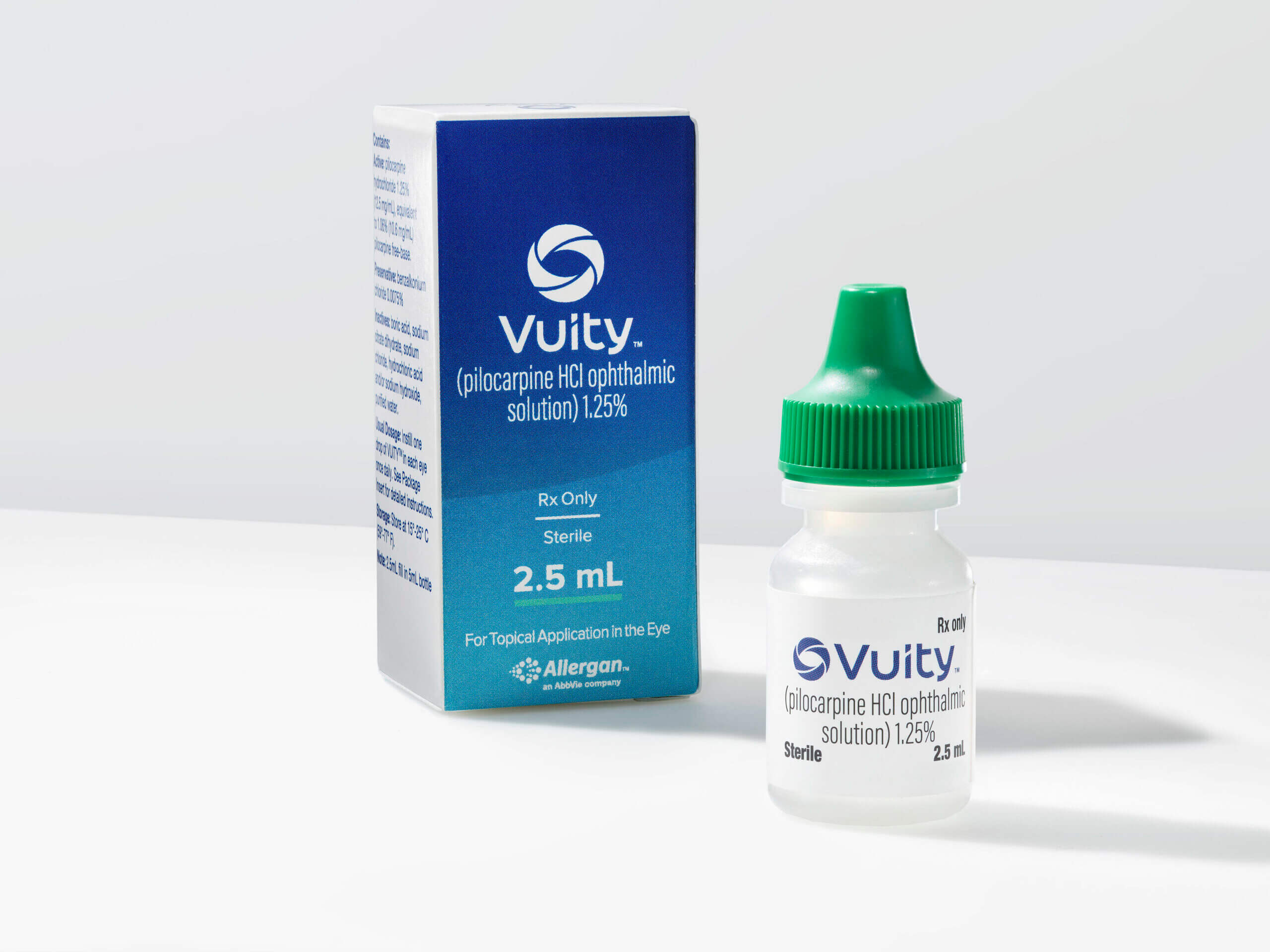
What is Presbyopia (Near Vision Decline)?
Our natural lens is clear and flexible when we are young. The lens is able to change its shape to focus on objects at various distances, this is known as “accommodation. As we age, the lens becomes more rigid, and we begin to lose our ability to focus at near objects without reading glasses. This gradual loss of near vision is called presbyopia and usually occurs in our forties and fifties.
The medical term presbyopia is Greek for “old eyes.” Presbyopia is a natural aging processes in our eye and is a condition that everyone will eventually experience with age. Presbyopia gets worse over time. At first, we adapt by pushing things out further to see clearly, but eventually this transitions to requiring reading glasses all the time. Even if you are normally nearsighted, you’ll still notice the near-vision loss when you’re wearing contacts or glasses to correct your eyes to see well at a distance. With further passage of time, the lens of our eye starts to cloud and form a cataract which causes vision loss that is uncorrectable by glasses and contacts.
What Causes Presbyopia?
Presbyopia is a natural part of aging. As you grow older, the lenses in your eyes thicken. They lose their elasticity, and the muscles surrounding the lenses weaken. Both these changes decrease your ability to focus, especially on near objects. The changes take place gradually, though it may seem that this loss of accommodation occurs quickly.
Symptoms of presbyopia include:


How Can I Prevent Presbyopia?
While you can’t prevent presbyopia any more than you can avoid aging, there are everyday steps you can take to boost your eye health and slow down how fast it gets worse as you age. Keeping your eyes in top shape may also lower your risk for developing other more serious eye problems down the road, such as age-related macular degeneration (AMD).
Try these tips for top eye health:
Which foods should I eat to keep my eyes as healthy as possible?
Your eyes rely on nutrients from the foods you eat to maintain vital eye tissues and functions. In addition to limiting alcohol and caffeine, you should make sure to stay hydrated by drinking enough water.
You should also try to eat foods that are rich in:
If you know you aren’t getting the right vitamins because your diet hasn’t included enough healthy foods, you can take a multivitamin instead. Remember though that vitamins that come in a pill are not as well absorbed by the body as those that occur naturally in fresh foods.
Treatment of Near Vision Decline
Presbyopia can usually be corrected with glasses or contact lenses. If you didn’t need glasses or contacts before presbyopia appeared, you can probably correct your eyesight by using reading glasses for close work. Over the counter reading glasses without a prescription may be sufficient. But check with your eye doctor to find out the right glasses for you. If you do buy reading glasses without a prescription, try out a few different pairs of varying strength (magnification) to make sure you get glasses that will help you read without straining.
If you already wear eyeglasses for other vision problems, you will probably need bifocals, trifocals, or progressive lenses. Bifocals correct for close-up and far vision. A line, which may or may not be visible, divides the lens into two parts. The bottom section of the lens focuses for near vision. The top section is to see distant objects. Trifocals have three lens sections to correct for close-up, mid-range and far vision.
Progressive lenses correct vision like bifocals and trifocals, but instead of a line that divides each area, the focus changes gradually in the lens from top for distance vision to bottom for near vision. Your prescription may have to be changed over time as presbyopia gets worse.
Some people prefer to wear contact lenses rather than eyeglasses. There are two types of contact lenses that help presbyopia. Monovision contacts correct one eye for distance vision and the other for near vision. Many people need to adapt to monovision lenses and train their brain to see this way. You may find you lose your ability to judge an object’s distance or speed with monovision lenses due to potential loss of stereo vision. Multifocal contacts have several rings or zones set at different powers.
With this design, you’re actually using both near and far vision at the same time. However, your brain will learn over time to select the right focus for what you want to see. A multifocal lens may make your vision less sharp than when using a monofocal lens.
Vuity Eye Drops: The First and Only Eye Drop for Presbyopia
In October 2021, the FDA approved Vuity eye drops (pilocarpine 1.25%) to treat presbyopia. This is the first medication that’s available to treat this condition. It contains a special version of pilocarpine, which is a common medication used for the treatment of glaucoma. It is not available over the counter (OTC) and only available with a prescription after seeing an eye doctor. No other medications have been approved or used to treat this condition.

How does Vuity work for treating presbyopia?
In short, Vuity works by making your pupils temporarily smaller so they can better focus on objects that are close to you. After Vuity is administered into the eyes, it usually begins to work within 15 minutes. It can continue working for up to 6 hours. However, it may take about a month for the medication to work at its best.
How is Vuity dosed?
Vuity eye drops are instilled into each eye once daily. If you use other eye medications in addition to Vuity, it’s recommended to separate doses by at least 5 minutes. You should also take out your contact lenses before using Vuity and to wait at least 10 minutes before reinserting them.
How effective is Vuity?
Combined data from two clinical trials — GEMINI 1 and GEMINI 2 — convinced the FDA to approve Vuity. In these two trials, 750 people with presbyopia between the ages of 40 and 55 were studied. Half of the participants received Vuity, and the other half received a placebo (no medication) eye drop. The studies found that Vuity significantly improved short-range vision compared to the placebo after 30 days of use. These effects were studied in low light conditions, or conditions that are about halfway between daylight brightness and darkness found at nighttime.
Importantly, the studies also found that Vuity had no impact on long-range vision.
What are the known side effects of Vuity?
What we know about Vuity’s potential risks and side effects comes from the clinical trials. No serious side effects occurred during these trials. But, as with all medications, there are a number of possible side effects.
The most common side effects found were headache and some eye redness.
Less common side effects that occurred in these trials included:
Find out if you are a candidate for Vuity Eyedrops, schedule an exam with us today at 1-800-527-3745 or request an appointment online.
LASIK, SMILE, & PRK can be Monovision options.
Contact us to determine your options
How Can Presbyopia Be Surgically Treated?

If you don’t want to wear glasses or contacts, surgery may be an option. Procedures that can help treat presbyopia include LASIK (laser-assisted in situ keratomileusis), SMILE (small incision lenticule extraction), and PRK (photorefractive keratectomy). These procedures use lasers to reshape the cornea of your eye. Laser surgery cannot give you both distance and near vision in the same eye. But your doctor can correct one eye for distance vision and the other eye for near vision (monovision).
Refractive lens exchange, also called lens replacement surgery or clear lens extraction, may be a good option for people with near vision decline (presbyopia). Refractive lens exchange replaces your eye’s clear natural lens with an artificial intraocular lens (IOL) to correct your refractive error and achieve sharp focus. While years ago it made sense to wait until a cataract formed to have surgery, recent advancements in technology have now made it worthwhile to consider having your lens replaced to fix presbyopia. The procedure for refractive lens exchange is virtually identical to cataract surgery except the lens being replaced is still clear, rather than a cloudy lens due to a cataract. As in cataract surgery, several types of IOLs are available to replace your natural lens, depending on your vision needs and the health of your eyes. Some lens implants correct either distance or near vision. Others (called multifocal implants) correct both near and distance vision. Ask us about our premium IOLs and how they can give you crisp, clear vision without the need for glasses or contacts.
There are many near vision correction options available today. We will help you to determine which is best for you and your lifestyle. While no procedure will restore perfect vision, you’ll be able to focus again on all your favorite things in finer detail.
Find out if you are a candidate, schedule a free screening with us today at 1-800-527-3745 or request an appointment online.

